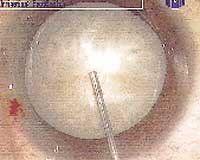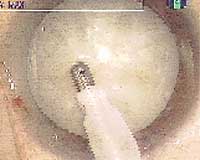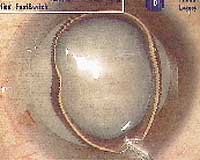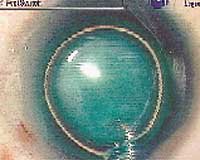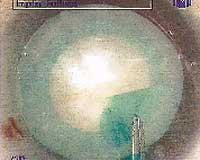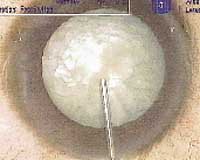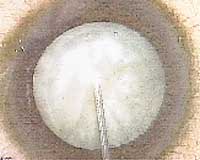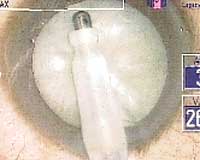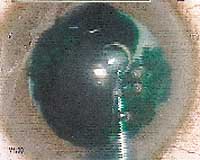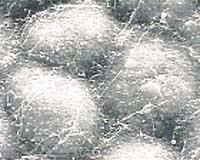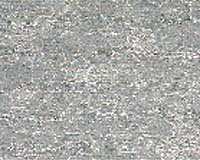Soft shell stain technique using visco-ICG aids white cataract removal
More viscous solution allows more uniform staining of the anterior capsule.
BOSTON — Takayuki Akahoshi, MD, reported on a new technique for safe and effective capsular staining for white, mature cataracts at the annual American Society of Cataract and Refractive Surgery meeting held here.
The removal of a white, mature cataract can be made difficult due to complications involving the capsulorrhexis. According to Dr. Akahoshi, “The liquefied cortex hinders the visibility of the rhexis edge,” leading to an errancy. Dr. Akahoshi’s technique has resulted in more effective capsular staining, which, in turn, has eliminated some of those complications.
Overview of method
Dr. Akahoshi begins the technique by decreasing the vitreous pressure using an intravenous drip injection of glycerol or mannitol 60 minutes prior to surgery. He then injects a small amount of Viscoat (chondroitin sulfate, sodium hyaluronate; Alcon) into the anterior chamber. He follows the Viscoat with a cohesive viscoelastic material, such as ProVisc (1% sodium hyaluronate; Alcon), to completely fill the chamber and push the Viscoat toward the cornea, according to the softshell technique first developed by Steve A. Arshinoff, MD, FRCSC. The cohesive ProVisc is then surgically removed using an irrigation and aspiration tip.
At this point, Dr. Akahoshi recommends that air be injected into the anterior chamber to prevent the dilution of the indocyanine green (ICG) solution. The air is followed by the injection of ICG solution on the lens surface. Dr. Akahoshi uses a bent G27 visco cannula for this.
“The ICG solution stains the lens capsule, while it does not touch and damage the corneal endothelium thanks to the transparent protective layer of Viscoat,” Dr. Akahoshi said.
After washing out the anterior chamber, the staining is complete. The chamber is filled with ProVisc again, and a capsulorrhexis may be performed.
Variations on technique
Dr. Akahoshi also developed another application of this technique, substituting a more viscous visco-ICG solution for standard ICG solution. The visco-ICG has a thick, viscous property, allowing for a strong, uniform stain. The solution is created by dissolving ICG powder in a cohesive viscoelastic material such as ProVisc. The procedure is the same as if ICG solution alone was being used, but the use of air to prevent dilution is not necessary.
Dr. Akahoshi has used the visco-ICG solution in over 30 human eyes, and has achieved complete capsulorrhexis in 100% of those cases, due to the excellent staining of the capsule.
“The visco-ICG solution has a high osmolarity, and when it makes direct contact with the corneal endothelium, cytoplasmic edema was observed by electron microscopic study in rabbit eyes,” Dr. Akahoshi said. “However, if the visco-ICG is applied under the protection of dispersive viscoelastic material, such as Viscoat, then no morphological changes were observed at all.”
| |
|
|
|
|
|
| |
|
|
|
|
For Your Information:
- Takayuki Akahoshi, MD, is the director of ophthalmology at Mitsui Memorial Hospital. He can be reached at (81) 3-3862-9111; fax: (81) 3-5687-9765; e-mail: eye@mba.dopa.nttdocomo.ne.jp. Dr. Akahoshi has no direct financial interest in any of the products mentioned in this article, nor is he a paid consultant for any companies mentioned.

